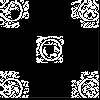Skip over navigation



Or search by topic
Number and algebra
Geometry and measure
Probability and statistics
Working mathematically
Advanced mathematics
For younger learners
Simple Train Journeys
Age 5 to 11
Challenge Level 





- Problem
- Getting Started
- Student Solutions
- Teachers' Resources
How will you record the different journeys?
Have you got a way of making sure you have got them all?
Perhaps there is a way you could use the three-station journeys to help you find all the four-station journeys?
When you're looking for a pattern in the numbers, it might help to go even simpler as well - how many journeys would there be for just two stations?
Can you see any way that the numbers of different journeys are connected to each other? It might help to write them in a list or table.
Have you got a way of making sure you have got them all?
Perhaps there is a way you could use the three-station journeys to help you find all the four-station journeys?
When you're looking for a pattern in the numbers, it might help to go even simpler as well - how many journeys would there be for just two stations?
Can you see any way that the numbers of different journeys are connected to each other? It might help to write them in a list or table.
You may also like
Counting Counters
Take a counter and surround it by a ring of other counters that MUST touch two others. How many are needed?
Cuisenaire Squares
These squares have been made from Cuisenaire rods. Can you describe the pattern? What would the next square look like?
Doplication
We can arrange dots in a similar way to the 5 on a dice and they usually sit quite well into a rectangular shape. How many altogether in this 3 by 5? What happens for other sizes?

